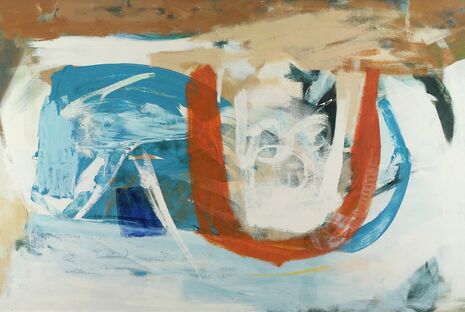Exhibition: Generation
Charlotte Gifford finds this exhibition a moving and unnerving experience

Alan Bowness is the owner of Generation Painting, an exhibition currently showing in The Heong Gallery at Downing College. When asked what it was that Bowness looked for in art, he replied: “the cutting-edge”. Displaying works produced between the Fifties and Sixties, the gallery showcases an array of bold paintings that very much define the insurgency of the post-war era. It’s a fascinating time period, one underrepresented in Cambridge’s art scene, and Generation Painting certainly does it justice.
The Heong Gallery has only recently opened. The architectural firm Caruso St John, who also redeveloped Downing’s hall, was responsible for converting the college’s Edwardian stables into a sleek modern building. Well-lit, with broad windows and a high ceiling, it avoids the stuffiness of other older galleries. The space is used well; nothing is tucked away or hidden, and there is plenty of room for you to take your time enjoying each piece in turn.
Bowness spoke of finding it difficult to explain to younger generations the dramatic transformation art underwent in this period. But looking at the unusual pieces on display, it’s not hard to imagine just how revolutionary these would have been at the time. Each piece jumps out at you. One such eye-popping artwork is Alpine by Richard Smith. A striking piece, it unfolds into the room – Bowness told us it was inspired by both the Swiss mountains and the shape of a cigarette box.
Somewhat bashfully, Bowness admits that he doesn’t really consider himself a collector. Having received most of the paintings as gifts from the artists he grew close to throughout his career, he feels he has amassed the collection almost by accident. You might think that this would make the collection seem random and incoherent, but in fact it gives it a great sense of character, and has allowed Bowness to acquire some real gems. You feel that the room is filled with fascinating personalities. Peter Lanyon captures your attention from the moment you walk in with his huge canvases of gorgeous, earthy colours applied in thick, lively textures – but a new dimension was added to his work when Bowness explained Lanyon‘s affinity for his birthplace Cornwall. Suddenly the abstract pieces transported you to the English coastline.
Some of the best pieces were actually among the smallest. Roger Hilton’s April 1961, was presented alongside one of the much larger artworks, Ocean, a William Scott piece similar in style to that of Rothko, yet it was no less striking. The broad sections of deep blue in Ocean highlighted the use of blank canvas in April, and made the strip of blood-red paint and the tribal, charcoal scribblings all the more disturbing.
The experience of looking at a painting and finding yourself moved – or even slightly unnerved – without quite knowing why, due to the abstract nature of the artwork, is partly what makes the exhibition so fascinating. You really can immerse yourself in the artworks and marvel at the raw skill behind them. More than anything, I’d recommend seeing the collection because it is genuinely refreshing. How many paintings of old Masters or men on horseback do you reckon you’ve seen around Cambridge? This is an impressive tribute to a decade of experimental and revolutionary art – well worth a visit.
Generation Painting 1955-65: British Art from the Collection of Sir Alan Bowness is open from 6th February to 22th May 2016 (10am-8pm on Wednesdays, 10am-6pm on weekends and bank holidays). Free admission.
 Features / Should I stay or should I go? Cambridge students and alumni reflect on how their memories stay with them15 December 2025
Features / Should I stay or should I go? Cambridge students and alumni reflect on how their memories stay with them15 December 2025 News / Cambridge study finds students learn better with notes than AI13 December 2025
News / Cambridge study finds students learn better with notes than AI13 December 2025 News / Dons warn PM about Vet School closure16 December 2025
News / Dons warn PM about Vet School closure16 December 2025 News / News In Brief: Michaelmas marriages, monogamous mammals, and messaging manipulation15 December 2025
News / News In Brief: Michaelmas marriages, monogamous mammals, and messaging manipulation15 December 2025 Comment / The magic of an eight-week term15 December 2025
Comment / The magic of an eight-week term15 December 2025








